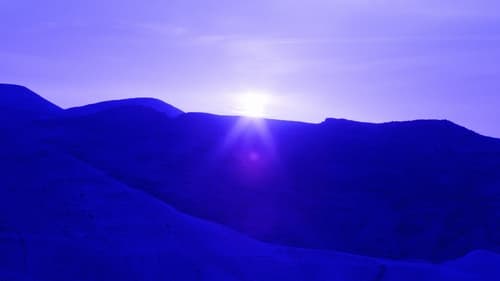
Writer
The Sylvester Stallone vehicle Rambo III (1988), is both a superficial commentary on the failure of war to resolve differences and a surreal interpretation of American exceptionalism through the actions of the individual. Although set in Afghanistan, with the hero besting a Russian army, the film was shot in the Israeli desert, with the involvement of the country’s military. Filmmaker Daniel Mann employs a variety of approaches to unpack what was to most audiences a brainless shoot ‘em-up, but to Mann is a work of many meanings.

Director
The Sylvester Stallone vehicle Rambo III (1988), is both a superficial commentary on the failure of war to resolve differences and a surreal interpretation of American exceptionalism through the actions of the individual. Although set in Afghanistan, with the hero besting a Russian army, the film was shot in the Israeli desert, with the involvement of the country’s military. Filmmaker Daniel Mann employs a variety of approaches to unpack what was to most audiences a brainless shoot ‘em-up, but to Mann is a work of many meanings.

Editor
Focusing on underground locations such as quarries, tunnels and caves, the filmmakers investigate the insatiable human desire to extract natural resources from the ground. In three chapters, they explore the healing powers of radon gas found in Austria, the powerful energy felt in stones in Switzerland, and the pearls created by sweat and blood found in Polish caves, a memento of those who died there. Together, these chapters form a geological and cultural history of our (often bodily) relation to the subsoil of the Earth, enabling different modes of knowing and experiencing the world. Like Castorp, the viewer is hence placed in a different reality, and invited to take "the ride into the mountains to be healed".

Director
Focusing on underground locations such as quarries, tunnels and caves, the filmmakers investigate the insatiable human desire to extract natural resources from the ground. In three chapters, they explore the healing powers of radon gas found in Austria, the powerful energy felt in stones in Switzerland, and the pearls created by sweat and blood found in Polish caves, a memento of those who died there. Together, these chapters form a geological and cultural history of our (often bodily) relation to the subsoil of the Earth, enabling different modes of knowing and experiencing the world. Like Castorp, the viewer is hence placed in a different reality, and invited to take "the ride into the mountains to be healed".

Director
When Bashir watches Sylvester Stallone riding a horse in the desert, he sees much more than Rambo. In between the frames, he sees the Naqab desert in Palestine, a land once confscated by Israel and turned into popular locations for epic Hollywood flms. He sees his lost home. No doubt, Israel’s climate simulates the Afghan steppe. But it was another advantage that made Israel a ‘natural’ stand-in for oriental warzones. Declassifed papers from the Israeli Military Archive reveal bureaucratic exchanges between Hollywood executives and military ofcers, containing pitches and lists of weapons to be used as props in the making of action flms. Guns, tanks, aeroplanes and, above all, desert lands, regularly used by the army for training purposes, were ofered as lucrative flm locations. Back in 1987 Bashir has been hired to make special efects and explosion for the flm Rambo. Today he returns to those same locations to gather evidence that may prove that this land is tribal land.




